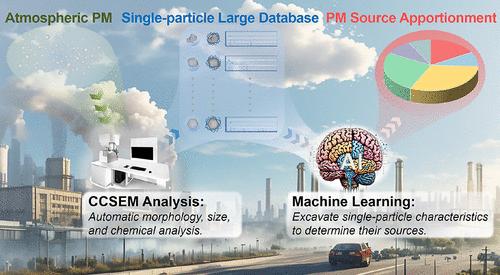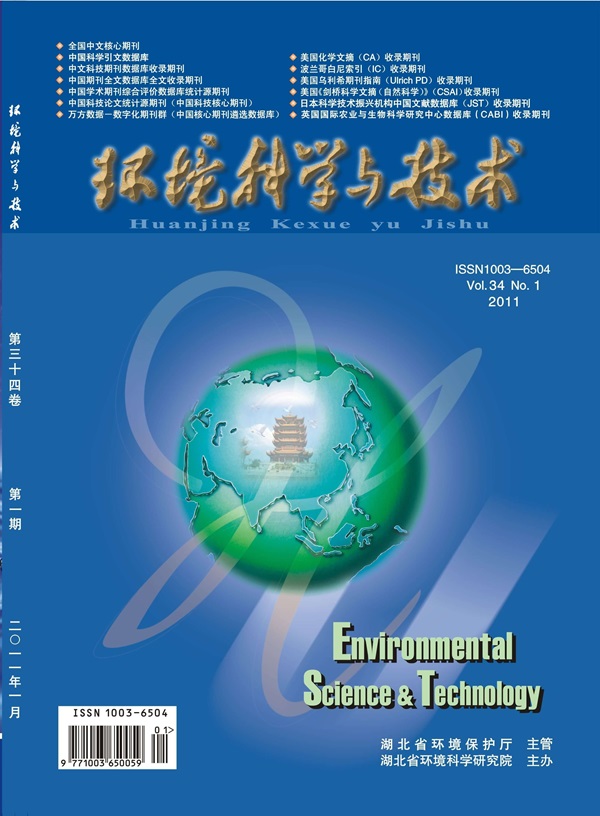IF 10.8
1区 环境科学与生态学
Q1 ENGINEERING, ENVIRONMENTAL
引用次数: 0
摘要
为了进一步降低大气中的颗粒物浓度,有必要对其来源进行更精确的识别。SEM-EDS 技术(扫描电子显微镜和能量色散 X 射线光谱学)可对物理和化学性质相对稳定的颗粒物进行高分辨率成像和详细的成分分析。本研究介绍了一种先进的来源分摊管道(RX 模型),它将计算机控制的扫描电子显微镜与计算机视觉和机器学习独特地结合起来,通过整合单颗粒形态、尺寸和化学信息来追踪颗粒来源。在使用已知源贡献的虚拟数据集进行的评估中,RX 模型表现出很高的准确性,颗粒数量的平均误差为 0.60%,质量贡献的平均误差为 1.97%。与化学质量平衡模型相比,RX 模型的准确性和稳定性分别提高了 75.6% 和 73.4%,在追踪中国某钢铁城市大气中的含铁颗粒物方面证明是有效的。这项研究表明,颗粒形态可以作为确定其来源的有效特征。研究结果凸显了电子显微镜技术与计算机视觉和机器学习技术相结合在提高我们对大气污染源认识方面的潜力,为可吸入颗粒物健康风险评估和循证决策提供了宝贵的见解。本文章由计算机程序翻译,如有差异,请以英文原文为准。

Advancing Source Apportionment of Atmospheric Particles: Integrating Morphology, Size, and Chemistry Using Electron Microscopy Technology and Machine Learning
To further reduce atmospheric particulate matter concentrations, there is a need for a more precise identification of their sources. The SEM-EDS technology (scanning electron microscopy and energy-dispersive X-ray spectroscopy) can provide high-resolution imaging and detailed compositional analysis for particles with relatively stable physical and chemical properties. This study introduces an advanced source apportionment pipeline (RX model) that uniquely combines computer-controlled scanning electron microscopy with computer vision and machine learning to trace particle sources by integrating single-particle morphology, size, and chemical information. In the evaluation using a virtual data set with known source contributions, the RX model demonstrated high accuracy, with average errors of 0.60% for particle number and 1.97% for mass contribution. Compared to the chemical mass balance model, the RX model’s accuracy and stability improved by 75.6 and 73.4%, respectively, and proved effective in tracing Fe-containing particles in the atmosphere of a steel city in China. This study indicates that particle morphology can serve as an effective feature for determining its source. The findings highlight the potential of electron microscopy technology coupled with computer vision and machine learning techniques to enhance our understanding of atmospheric pollution sources, offering valuable insights for PM health risk assessment and evidence-based policy-making.
求助全文
通过发布文献求助,成功后即可免费获取论文全文。
去求助
来源期刊

环境科学与技术
环境科学-工程:环境
CiteScore
17.50
自引率
9.60%
发文量
12359
审稿时长
2.8 months
期刊介绍:
Environmental Science & Technology (ES&T) is a co-sponsored academic and technical magazine by the Hubei Provincial Environmental Protection Bureau and the Hubei Provincial Academy of Environmental Sciences.
Environmental Science & Technology (ES&T) holds the status of Chinese core journals, scientific papers source journals of China, Chinese Science Citation Database source journals, and Chinese Academic Journal Comprehensive Evaluation Database source journals. This publication focuses on the academic field of environmental protection, featuring articles related to environmental protection and technical advancements.
 求助内容:
求助内容: 应助结果提醒方式:
应助结果提醒方式:


